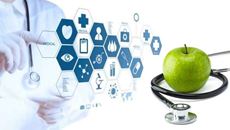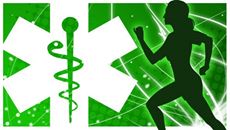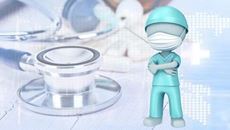- Delivery Method Online
- Professional Certificate
- 24hrs Suggested Study Time
- 3 Months Access
- Tutor Support
- Study On Any Device
- 23341 Students
The Human Body: Anatomy and Physiology

Gain a greater appreciation and understanding of the marvelous complexity of the human body.
This self-paced online course begins with an explanation of the nature of matter and a review of the principles of chemistry that are important to human physiology. We'll place an emphasis on the organisation of the human body and the differences between nonliving matter and living organisms. We'll also cover cell anatomy and physiology because all life processes are ultimately carried out at the cellular level. You'll also learn principles of genetics and gain an understanding of how traits are passed from one generation to the next.
After we've established this foundation, we'll survey the anatomy and physiology of each of our 11 organ systems. You'll learn how our nervous system allows us to receive, process, and interpret sensation and send messages to our muscles and glands. We'll cover the skeletal and muscular systems, learning how they make movement possible, and also about some of their little-known but equally essential functions.
This course explains how the circulatory and respiratory systems work together to provide our bodies with the oxygen our tissues need, and how they work together with the skin and kidneys to rid our bodies of wastes. You'll learn how our bodies fight off diseases, and how our digestive system converts the food we eat into energy and the tissues of our bodies. We'll also spend time on the endocrine system, which supplies the hormones we need for our survival, and the reproductive system, that group of organs that allows life to be passed on to another generation.
We'll also discuss functions of the different organ systems that you'll probably find surprising. In addition, each lesson includes information about specific disorders that sometimes happen to our bodies, and we'll also talk about some recent advances in medicine. By the end of this course, you'll have a greater appreciation and understanding of the marvelous complexity of the human body!
Courses are delivered to you through expertly executed lessons, online instruction and interaction with like-minded students. Our courses are designed to deliver all of the benefits of studying in a classroom whilst giving you the flexibility to study at a time and place to suit your needs. You can access your classroom 24/7 from any device with an internet connection.
This course has a 3 month duration. You'll complete comprehensive lessons, quizzes and assignments before submitting your final exam at the end of the course to achieve your certificate. Courses must be completed within the 3 month access period.

Holly Trimble
Holly Trimble has a bachelor's degree in physical therapy from the University of Colorado and a master's degree in pediatric physical therapy from Boston University. She completed an additional 15 credit hours in education at the doctoral level. S... Read more
Read Holly Trimble's ProfileFrequently Asked Questions
What people are saying about our courses
The Learning Environment
From the moment that you enrol in the The Human Body: Anatomy and Physiology you will become an integral part of our learning community. You'll find yourself with the freedom to learn at a speed that suits you, on any device, from anywhere in the world. Achieving your career goals no longer has to mean compromising family and work commitments.
Ready to get started?
Enrol NowOur Values
Learn At Your Own Pace
We believe in personalised learning. That's why we provide all the tools and support you need to succeed at your own pace. With flexible learning, you'll stay motivated and retain more information. Plus, you can balance your studies with work and family commitments to make your dreams a reality.
We Won't Break The Bank
Education should be accessible to anyone who wants to learn. That's why we offer some of the most competitive prices in the industry with payments plans for just $25 per week. Investing in your future is a smart choice and doesn’t have to break the bank.
Industry-Led Courses
There's no better way to learn than from experts with years of experience in your field. That's why each of our 200+ industry-led courses are designed to give you a real-life perspective on your industry. With our expert mentors, you'll learn from people who have a wealth of knowledge and experience, and who are passionate about sharing it with you.
Get The Personal Support You Deserve
At Vibe Learning, we're real people who are dedicated to providing you with personal support every step of the way. Our industry experts are not only professional and knowledgeable but also incredibly passionate about sharing their expertise with you. With their guidance, you'll gain invaluable insights and practical knowledge to help you succeed.
Still looking?
Check out the following courses related to The Human Body: Anatomy and Physiology:




